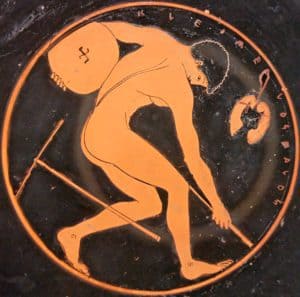Training Gets Its Start
Physical training (also referred to as exercise, personal training, physical activity, strength training, weight training, and performance training) has a long, rich history. Some of the earliest records of physical training are drawings on the walls of a funerary chapel in Beni-Hassan in Egypt (estimated at about 4500 years ago).
In the sixth century, there were competitions between athletes lifting heavy stones. Formal weight training originated with the Romans, who developed a much-feared army.
As early as 1896 B.C. records were discovered pertaining to the feats of strength practiced in what is known as the British Isles as well as far back to the Neolithic era (the beginning of agriculture beyond the practices of the hunter-gathers). Strength or Weight training (an integral part of personal training) has its origins as far back as ancient Greece and China. The Homeric poems also present early instances of weight throwing.
According to the historian Norman Gardinier:
“Throwing the diskos is one of the most popular diversions in Homer…Odysseus proved his might by hurling a diskos (discus) heavier and farther than any that the Phaeacians could hurl…Greece was a land of stones, and they provided a natural weapon in war and a natural test of strength…”
Gardinier also wrote:
“The characteristic of the sixth century is strength. The typical athlete of the period is the strong man, the boxer, or the wrestler. The object of the old gymnasts, says Philostratus, was to produce strength only, and in consequence of their healthy life the old athletes maintained their strength for eight or even nine Olympiads.”
One of the most famous of these ancient strength athletes was Milo, born in Crotone, in the district of Calabria in Southern Italy (about 558 B.C.).
Milo is often credited with inventing progressive resistance training because of his shouldering and carrying a growing heifer the full length of the stadium at Olympia, and doing so until the calf was four years old.
You Can See it in the Art
The art records from Greece at this time period indicate that strength was the predominant characteristic.
Early nude statues were widely distributed throughout Greece and the islands all having the same style to render the muscles of the body be it the “Apollo” or “Argive” statue.
The typical figure of the 6th century was that of the bearded Hercules (Some texts seem to indicate Hercules took resistance training from his coach, Chiron. Weightlifting was a popular sport at the Greek Olympic Games).
Much archeological evidence exists confirming stories that strength was revered and weightlifting practiced during the Greek period. One discovery found is the red sandstone bearing a 6th-century inscription to the effect that one Bybon with one hand threw it over his head. Another such block has been found (a mass of black volcanic rock) weighing 480 kilos. This block has an inscription stating “Eumastas the son of Critobulus lifted me from the ground.” (6th century).
Evidence also states that implements such as the discus, the javelin, and the halteres (jumping weights) were used to increase health and strength. The halteres varied in size and shape and were evidently used in many exercise drills during the Greek periods. It is safe to suppose the halteres are the predecessors of the modern dumbbell.
The Introduction of Specialized Systems
Galen, a celebrated physician of the 2nd century, A.D., was influential in developing systematic strength training exercises, using implements such as the halteres. His systems included what modern coaches refer to as heavy lifting, dumbbells, and isometric exercises. Galen also recommended a number of exercises to improve athletic power, or strength with speed.
While Greek culture’s emphasis was on mind, body, and spirit the grimly pragmatic Romans dictated that any and all types of strength training would be extremely practical to enhance their primary aim for the promotion of the country’s battle (war) prowess.
These Roman soldiers, along with the previously mentioned strength training, used gladiatorial training to include such conditioning aids as chopping at a wooden post with weapons much heavier than those used in combat (not unlike the sledgehammer training utilized in modern day conditioning protocols).
The fall of the Roman Empire saw the end of such physical training due to the philosophy of Christian asceticism prominent in the Dark Ages. During this time all physical training had its skill in warfare only. This period lasted approximately one thousand years until the Renaissance and rebirth of Galen’s system. Many of this time period promoted that boys should hang from a bar, climb ropes, lift weights, and engage in matching strength with other opponents







